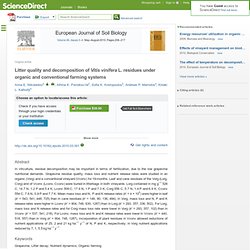

Chapter 4: Questionnaire Design. No survey can achieve success without a well-designed questionnaire.

Unfortunately, questionnaire design has no theoretical base to guide the marketing researcher in developing a flawless questionnaire. All the researcher has to guide him/her is a lengthy list of do's and don'ts born out of the experience of other researchers past and present. Hence, questionnaire design is more of an art than a science. Chapter Objectives This chapter is intended to help the reader to: · Understand the attributes of a well-designed questionnaire, and· Adopt a framework for developing questionnaires. Structure Of The Chapter A brief account of the key attributes of a sound questionnaire serves as the opening section of the chapter. The qualities of a good questionnaire Exploratory questionnaires: If the data to be collected is qualitative or is not to be statistically evaluated, it may be that no formal questionnaire is needed. 1. Figure 4.1 The steps preceding questionnaire design 1. "A short while ago". "
Infrared Soil Analysis routine Services - CSIRO Land and Water. Brought to you by CSIRO Land and Water Analytical Services and the Grains Research and Development Corporation (GRDC) History | What is mid infrared (MIR) spectroscopy?

| The strengths of the CSIRO MIR service | Predicting soil properties | Sample requirements | Partial Least-Squares (PLS) Analysis | The MIR Facility in Adelaide | Price list | Staff / Contact details Welcome to the CSIRO Infrared Soil Analysis Service, Adelaide, South Australia. CSIRO Land and Water has considerable expertise in the use of mid infrared (MIR) spectroscopy. This cost-effective technique can be used to predict a wide range of chemical and physical soil properties quickly and easily. The CSIRO Infrared Soil Analysis Service is available to industry, government, research institutes and universities on a routine basis. [Back to Top] History What is Mid Infrared (MIR) Spectroscopy? Light energy in the mid infrared range 4000 to 500 cm-1 (2500 to 20,000nm) is focused onto the surface of the air-dry soil sample.
European Journal of Soil Biology - Litter quality and decomposition of Vitis vinifera L. residues under organic and conventional farming systems. Abstract In viticulture, residue decomposition may be important in terms of fertilization, due to the low grapevine nutritional demands.

Grapevine residue quality, mass loss and nutrient release rates were studied in an organic (Vorg) and a conventional vineyard (Vconv) for 19-months. Leaf and cane residues of the Vorg (Lorg, Corg) and of Vconv (Lconv, Cconv) were buried in litterbags in both vineyards. Lorg contained in mg g−1 526 C, 14.7 N, 1.2 P and 5.4 K; Lconv 509 C, 17.9 N, 1 P and 7.3 K; Corg 556 C, 5.7 N, 1.4 P and 6.9 K; Cconv 554 C, 7.6 N, 0.9 P and 7.7 K. Mean mass loss and N, P and K release rates (k′ = k × 105) were higher in leaf (k′ = 543, 541, 448, 725) than in cane residues (k′ = 146, 90, 136, 494).
Keywords Grapevine; Litter decay; Nutrient dynamics; Organic farming Abbreviations Copyright © 2010 Elsevier Masson SAS. Small Ruminant Research - Digestibility and voluntary intake of vine leaves (Vitis vinifera L.) by sheep. Technical Note a Centro de Capacitación y Experimentación Agraria, Consejerı́a de Agricultura, Ctra. de Aguas Nuevas, km. 6.7, 02071 Albacete, Spainb Departamento de Producción Animal, Universidad de Murcia, Campus de Espinardo, 30071 Murcia, Spainc Departamento de Patologı́a Animal, Universidad de Murcia, Campus de Espinardo, 30071 Murcia, Spain Received 25 July 1999, Accepted 11 April 2000, Available online 17 August 2000 Choose an option to locate/access this article: Check if you have access through your login credentials or your institution Check access Get rights and content Abstract Twelve castrated adult male (62±3 kg body weight) Manchego sheep were used in a digestion trial.

Industrial Crops and Products - Chemical composition and pulp characterization of Tunisian vine stems. A Research Unity of Applied Chemistry & Environment, Department of Chemistry, Faculty of Sciences, University of Monastir, Monastir 5019, Tunisiab Laboratoire de Génie des Procédés Papetiers (LGP2), UMR CNRS 5518, Grenoble INP-Pagora – 461, rue de la papeterie – 38402 Saint-Martin-d’Hères, France Received 9 May 2011 Revised 10 July 2011 Accepted 30 July 2011 Available online 24 September 2011 Choose an option to locate/access this article: Check if you have access through your login credentials or your institution Check access Abstract In this study, the valorisation of Tunisian vine stem wastes was investigated.

Highlights Keywords Vine stems; Chemical composition; Pulping; Paper properties Figures and tables from this article: Bioresource Technology - Distribution of nutrients in anaerobic digestion of vine shoots.